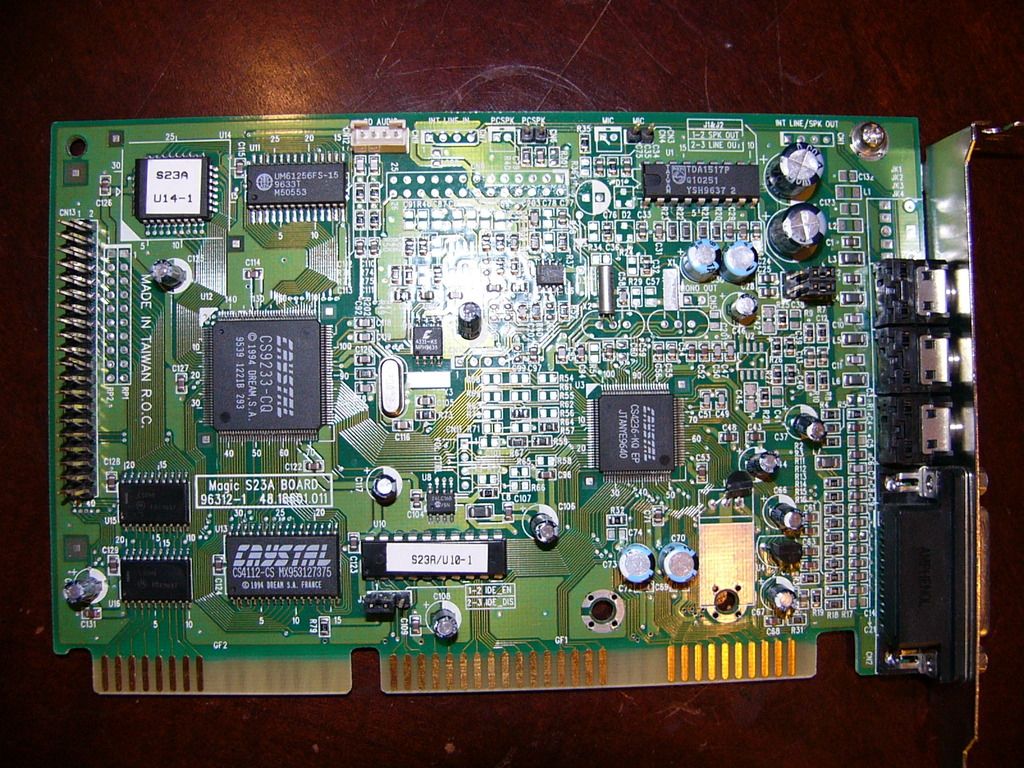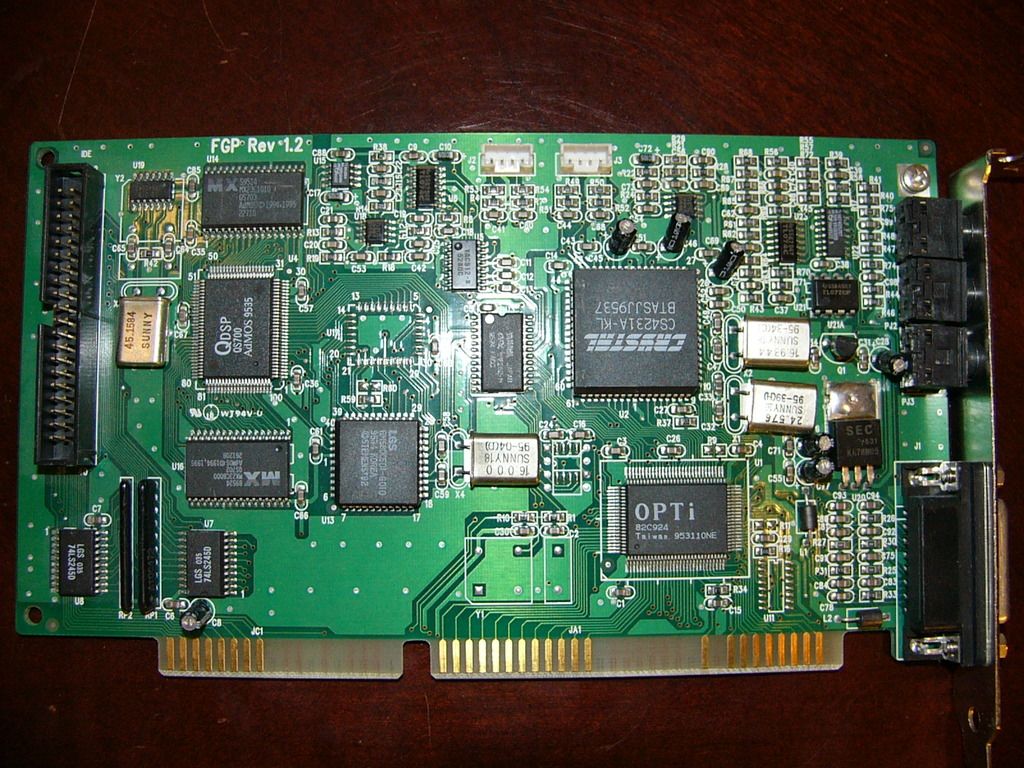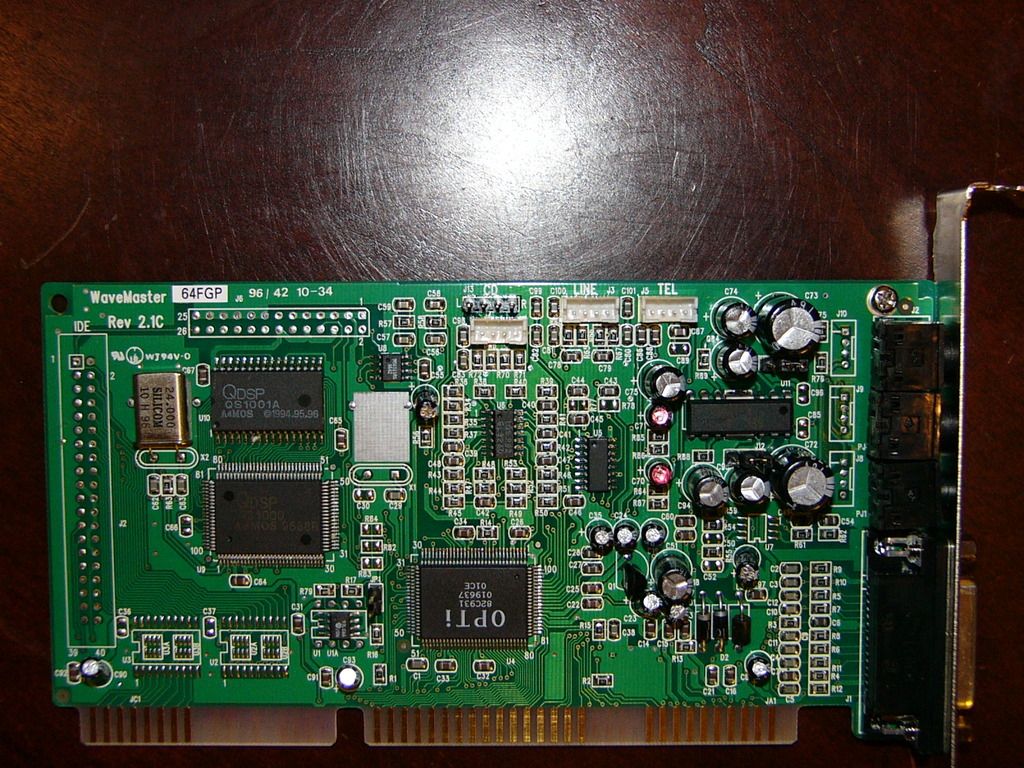First post, by boxpressed
- Rank
- Oldbie
I'm not sure if the title of this thread accurately describes what I'm interested in, but I'd like to compile a list of ISA sound cards that have MT-32/GM/GS/XG wavetable sound banks on the board itself so that you do not need a Waveblaster-compatible daughterboard or an external module with those banks.
I'm interested in those ISA cards that can play MT-32/GM/GS music without a TSR and in real-mode DOS.
The only card that I own that can do this is an Ensoniq Soundscape Opus, which has a 1MB bank and is a cut-down version of the S-2000 and Elite. Still, it's kind of neat to be able to boot to real-mode DOS and use it immediately for GM music without any TSRs.
(One thing I'm not sure about is when GM music is "actual" GM music and when it is emulated. I know that a GUS can emulate GM from its own proprietary sound bank, for example, but are the Soundscapes also "emulating" GM, or is it using the actual GM standard with Ensoniq's sound bank? There's a lot I still need to learn about GM on PCs.)
Besides the Ensoniq Soundscapes, I know about the LAPC-I and SCC-1 from Roland, as well as the SW60XG from Yamaha. Other manufacturers I've heard of with cards like these include Terratec and Turtle Beach.
Which other cards have this capability?
***
UPDATE: LIST OF CARDS FROM THREAD
CARDS THAT DO NOT REQUIRE TSR
• AVM Apex/Apex Pro
• Aztech Waverider Pro 32-3D
• Aztech Waverider Platinum 3D PnP
• BTC 1855 (ESS 1868F controller/codec, ES690F synth, ES981P ROM patchset)
• Ensoniq Soundscape S-2000
• Ensoniq Soundscape Elite
• Ensoniq Soundscape II
• Ensoniq Soundscape Opus (Ensoniq ES-5530 "Opus" synth, COW Chip, Analog Devices AD1845JP codec)
• Guillemot MaxiSound game Theater 64 (ESS AudioDrive 1868F controller/codec, Dream 9407 synth)
• Logitech Soundman Wave
• Mediatrix Audiotrix Pro
• miro Sound PCM 12 series
• Orchid Soundwave 32 (ADSP2115, Analog Device AD1848KP)
• Reveal Sound FX Wave SC500 (OPTi 82C929 controller, Crystal CS4248-KL codec, CS9203-CL synth)
• Reveal Soundwave 32 FX SC600
• Roland LAPC-I
• Roland SCC-1
• Roland SCC-1A
• Roland RAP-10
• Silicom Wavemaster 32FGP Rev 1.2 (OPTi 82C924 controller, CS4231A-KL codec, AdMOS QDSP QS700 synth)
• Silicom Wavemaster 64FGP Rev 2.1c (OPTi 82C931 controller/codec, AdMOS QDSP QS1000)
• Terratec EWS64 S/L/XL/XXL
• Terratec Maestro 16/96
• Terratec Maestro 32/96
• Turtle Beach Maui (Motorola 68EC000 controller, ICS2116, ICS2115V synth)
• Turtle Beach Multisound Pinnacle (Kurzweil MA-1 synth)
• Turtle Beach Tropez/Tropez Plus
• Yamaha SW60XG
CARDS THAT REQUIRE TSR OR REQUIREMENT UNKNOWN
• AOpen AW32 Pro (Crystal CS4236 controller/codec, Crystal CS9233-CQ synth)
• AOpen AW35 Pro (Crystal CS4237 controller/codec, CS9236 synth)
• Aztech Waverider 32+
• Creative Sound Blaster 32 (Creative Labs EMU8000 synth)
• Creative Sound Blaster AWE32 (Creative Labs EMU8000 synth)
• Creative Sound Blaster AWE64 (Creative Labs EMU8000 synth)
• Creative Sound Blaster CT1920 "Goldfinch" (Creative Labs EMU8000 synth)
• Ensoniq Soundscape VIVO (Ensoniq Mark5, Ensonic OttoR2C, AD1845JP codec)
• Gravis Ultrasound Classic
• Gravis Ultrasound ACE
• Gravis Ultrasound PnP
• Gravis Ultrasound Max
• OmniLabs AudioMaster AMS-8000
• Sierra Semiconductor ARIA based sound cards (i.e. Prometheus ARIA16)
• Turtle Beach Multisound Classic
• Turtle Beach TBS-2000 (Crystal CS4232-KO controller/codec, ICS2115V synth)
• Yamaha SW20-PC



